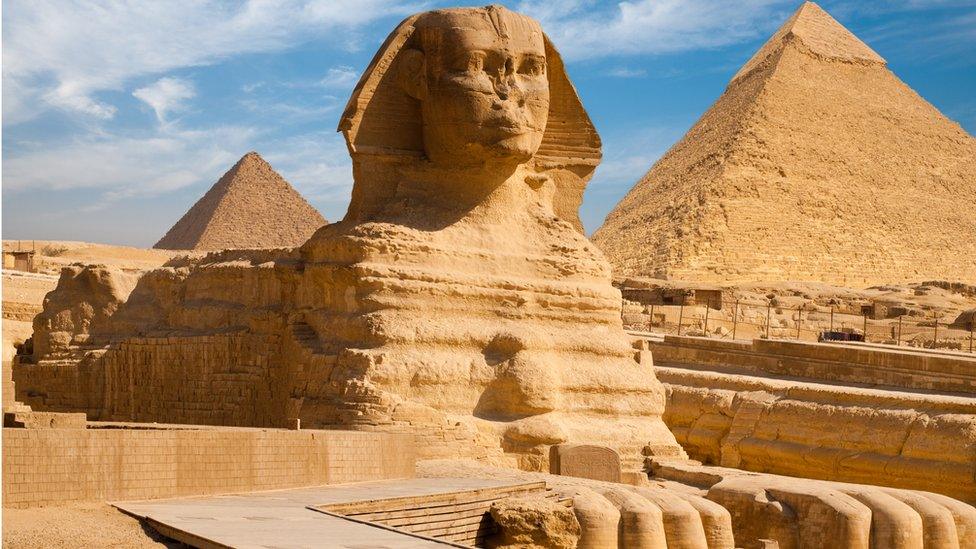Egypt's sphinx statues: How were they made?
- Published
- comments

The Great Sphinx in Egypt is believed to have the face of Pharaoh Khafre
Sphinx statues may not have been created solely by humans, according to scientists from New York University.
The team, led by Dr Leif Ristroph, studied the giant stone statues to figure out how they may have formed.
Most sphinxes are found in Egypt, including the Great Sphinx of Giza which is around 4,500 years old, 20m high and a huge 73m long.
Previously it was thought that these ancient monuments were carved completely by humans, but now Dr Ristroph and his team believe that might not be the case.
Sphinxes are fearsome creatures that crop up in ancient Egyptian and Greek mythology.
They have the head of a human, the body of a lion and occasionally the wings of an eagle.
How were the sphinx made?
The new research suggests erosion, by the weather, may be partly responsible for their distinctive shape.
"Our laboratory experiments showed that surprisingly Sphinx-like shapes can, in fact, come from materials being eroded by fast flows" co-author Dr Leif Ristroph said.
As part of the study to understand how ancient Egyptian sphinx statues were formed, the scientists tried to recreate weather conditions from around 4,500 years ago in Egypt in their lab.
This is because they wanted to try to see how wind moved around and shaped the rocks to create unusual rocky formations called yardangs.
The scientists believe that sphinx statues might have started out as one of these unusual-shaped yardangs, and that ancient humans might have used one as a base to carve in details for a sphinx statue.
"There are, in fact, yardangs in existence today that look like seated or lying animals, lending support to our conclusions," Dr Ristroph said.
The Great Sphinx of Giza has been repaired over the years with chunks of limestone rock
Erosion is the process in which soil or rock is worn down slowly over time by wind or water.
For their experiment the scientists used lumps of soft clay with harder material inside to recreate a similar landscape to north-eastern Egypt.
They then sent a fast-flowing stream of water through a tunnel with the clay in, to try to mimic the strong winds that would have shaped them through erosion over time.
They eventually reached a sphinx-like shape where the harder material in the lump became the "head" of the sphinx, and other features such as a 'neck', 'paws' and 'back' were revealed.
The scientists ran water past clay lumps to see what shape it would form
The scientists think that ancient Egyptians might have seen these unusual shaped yardangs and, inspired by their animal-like shapes, decided to carve them into mythical creatures.
The team also hope that their findings will be useful to geologists - scientists who study the Earth - as their work demonstrates how some rock formations are created.
- Published30 September 2021
- Published28 January 2023
